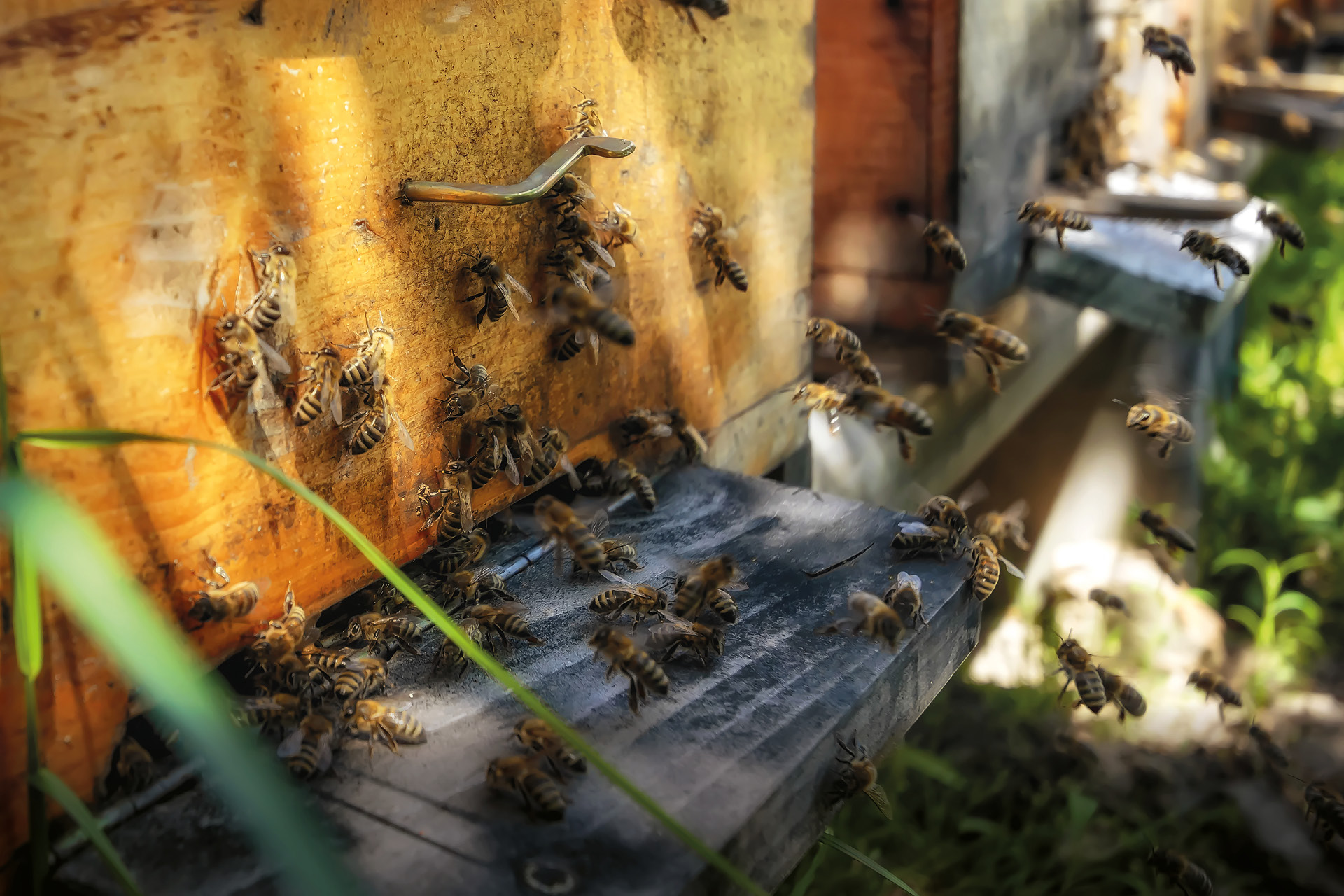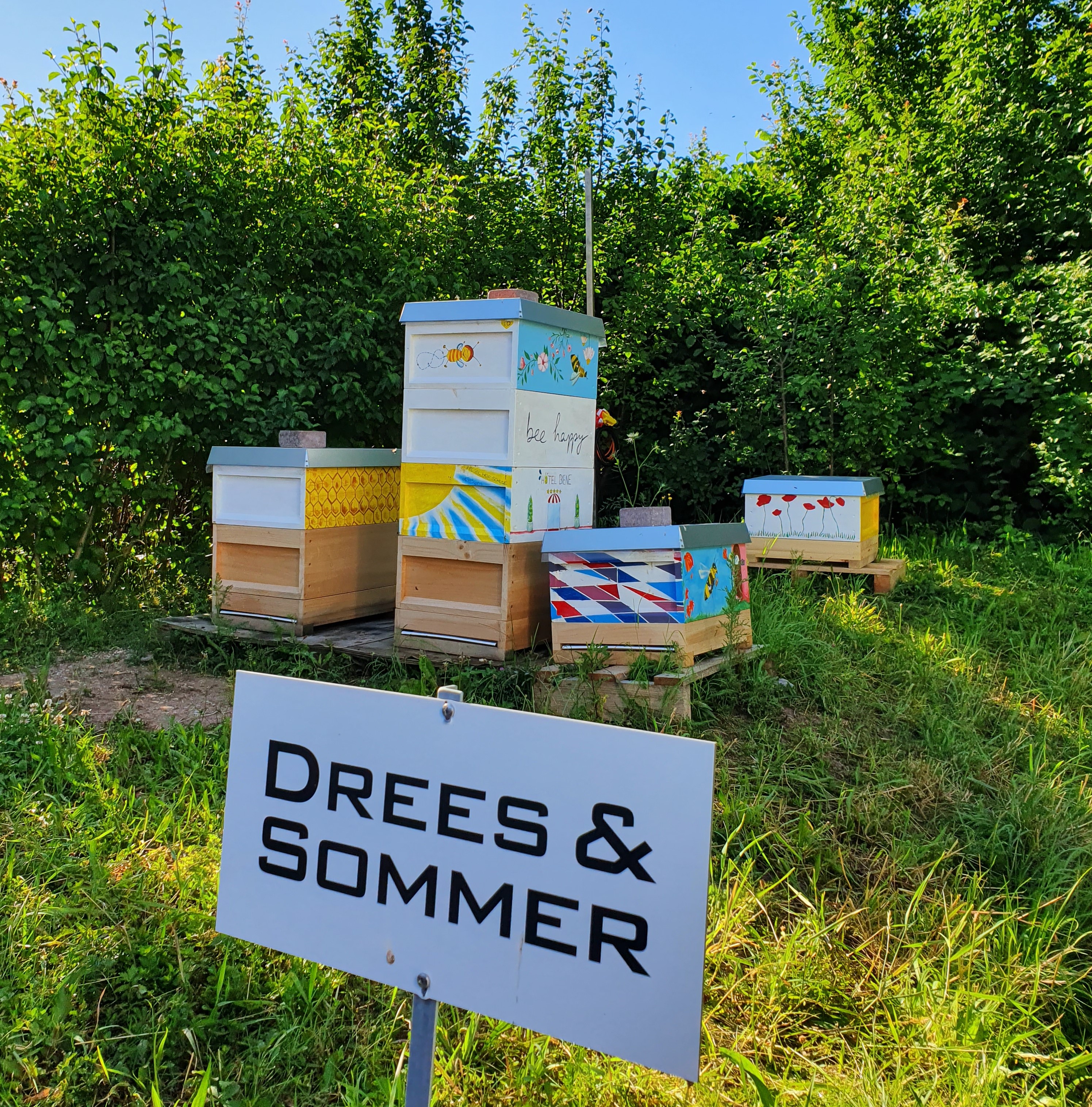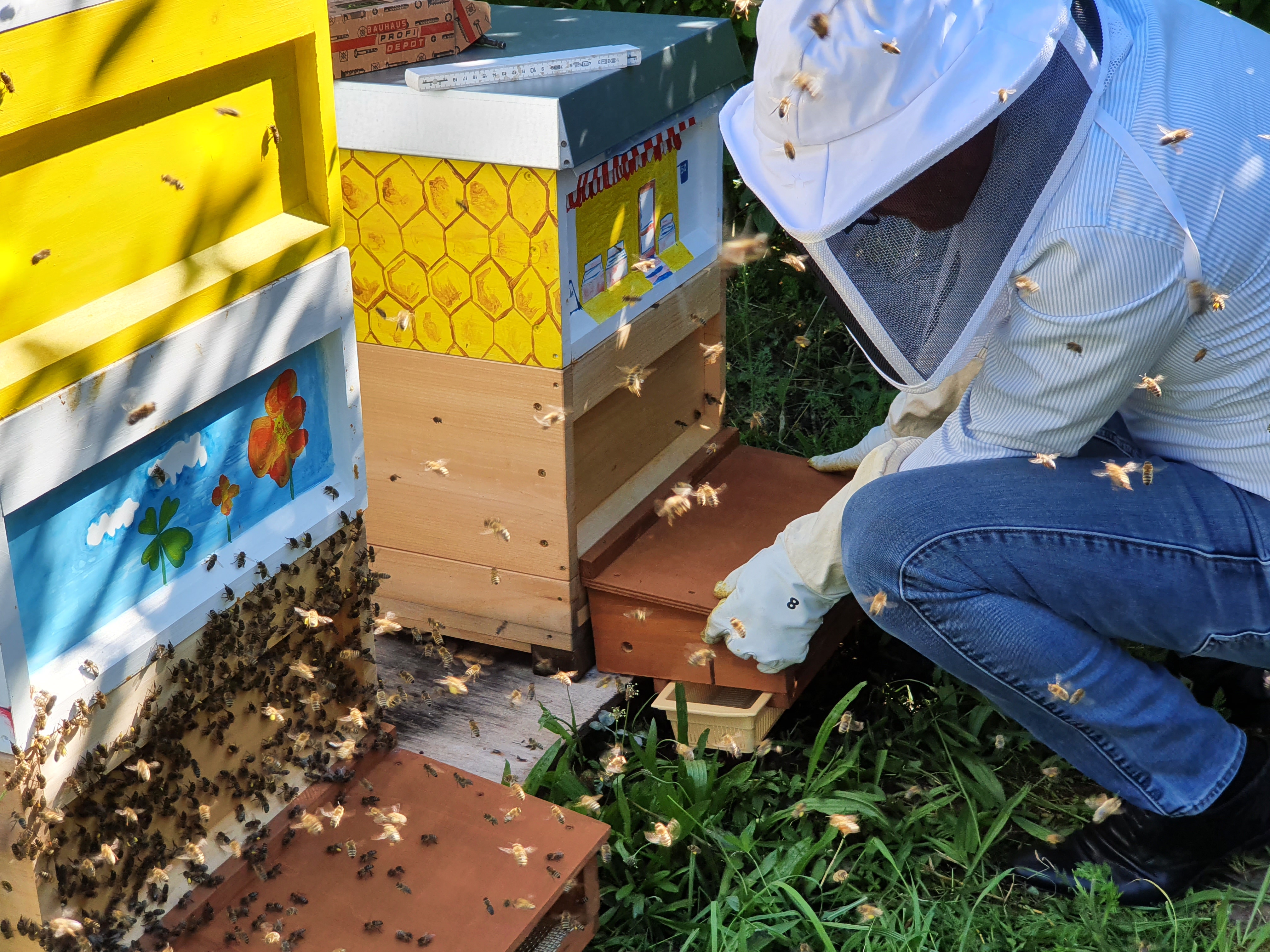Doormats collect pollen samples
Drees & Sommer bees have been active since spring this year and will produce some 20 kilograms of honey in their first year. And – as the result of Dresos teaming up with the Belgian startup BeeOdiversity – since early summer they have also been contributing to research into biodiversity and how it can be enhanced. The first step in the project was the installation of ‘doormats’ at the entrance to the beehives.
“The bees are nervous,” is a statement you don’t want to hear when you are near a beehive. But Sebastian Hampel has gauged the situation correctly. The bees are nervous because he and his colleagues Sebastian Beck and Stefan Krcelic are approaching the entrances to the four Drees & Sommer beehives. But with the help of a smoker, a special device that emits a cloud of smoke, he calms the bees and defuses the situation. The Dresos can now get to work: Today, they are installing a piece of equipment that will take a sample of pollen from the bees. Because Drees & Sommer and the Belgian startup Beeodiversity have something special in mind.
The idea is based on a well-known characteristic of pollen, namely that it can be used to measure the level of environmental pollutants. It also allows conclusions to be drawn about which flowers the bees flew to and the types of plant growing in the surrounding area. This gave rise to the idea of using the information for the development of sustainable buildings, districts and even whole cities. It would, for example, allow special mixtures of flowering plants to be created for green spaces, thereby ensuring broad biodiversity.
Please wipe your feet!
To collect the pollen, the Dreso beekeepers install special structures at the hive entrances. They comprise a wooden frame, a fine metal mesh, and a small plastic basket. They act as a ‘doormat’. Bees returning to the hive inadvertently brush some pollen from their rear legs. This falls through the mesh into the basket below.
The basket is emptied regularly, and the pollen samples are carefully bagged and sent by mail to BeeOdiversity in Brussels. There, a team of professional beekeepers and laboratory analysts carry out chemical and biological analysis of the pollen. Regular pollen samples are taken during four measuring cycles per year, each lasting several weeks.
The innovative aspect of the approach involves the use of digital tools: An auditing tool documents the status of the colonies, while a mapping tool helps determine the areas covered by the bees. And finally, a monitoring dashboard provides a clear graphic visualization of the data collected.
The Dreso blog will keep you updated on the project’s progress and outcomes.




